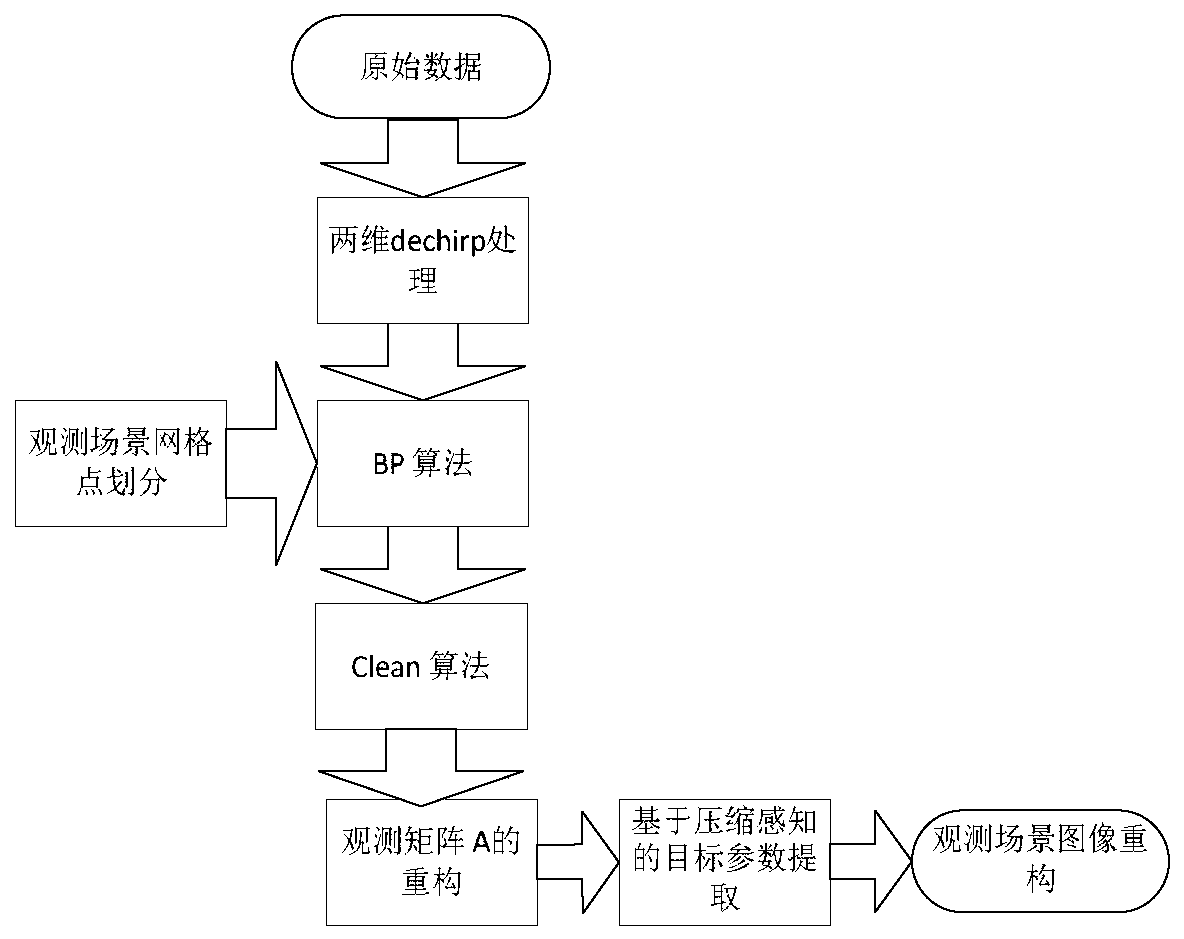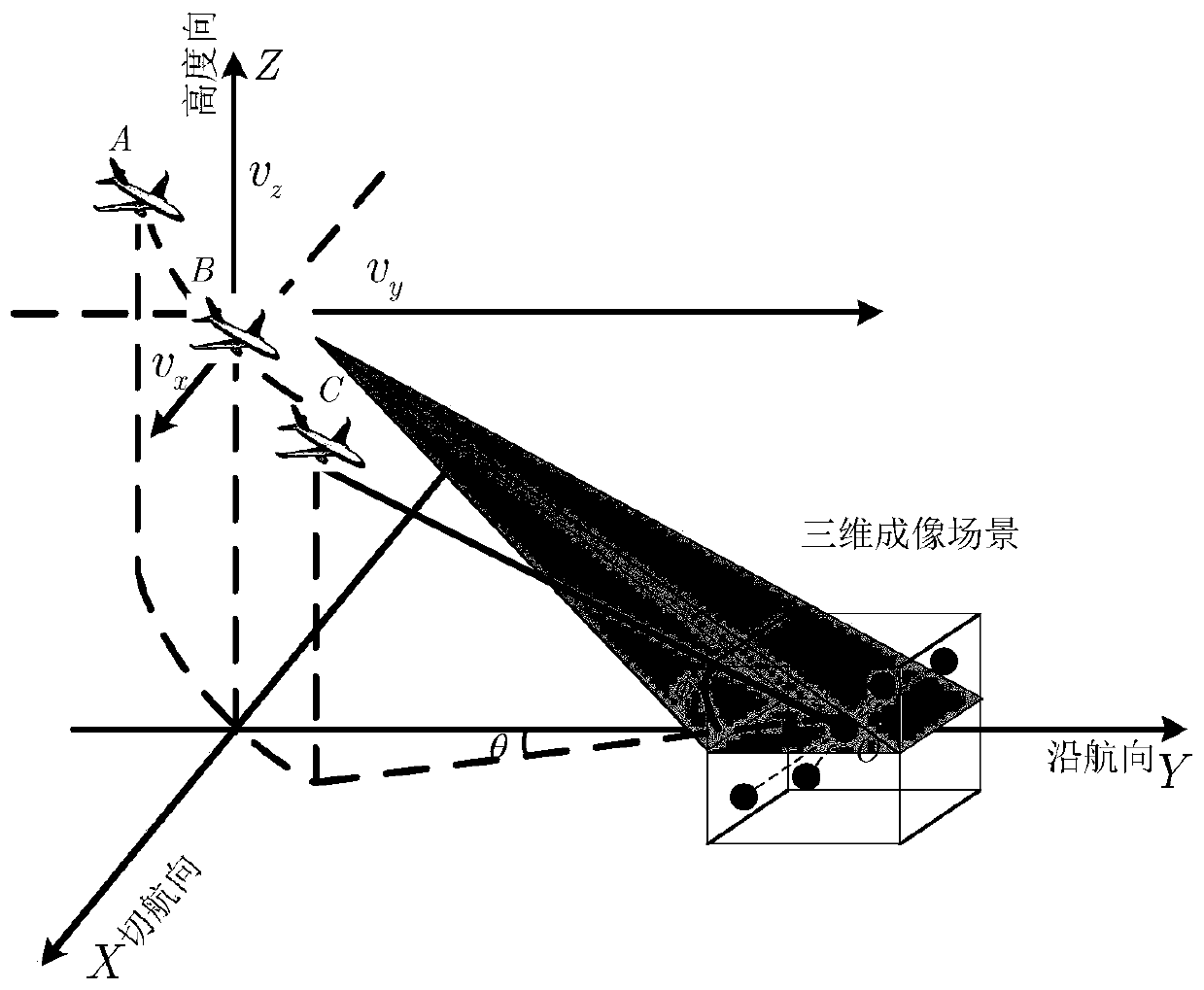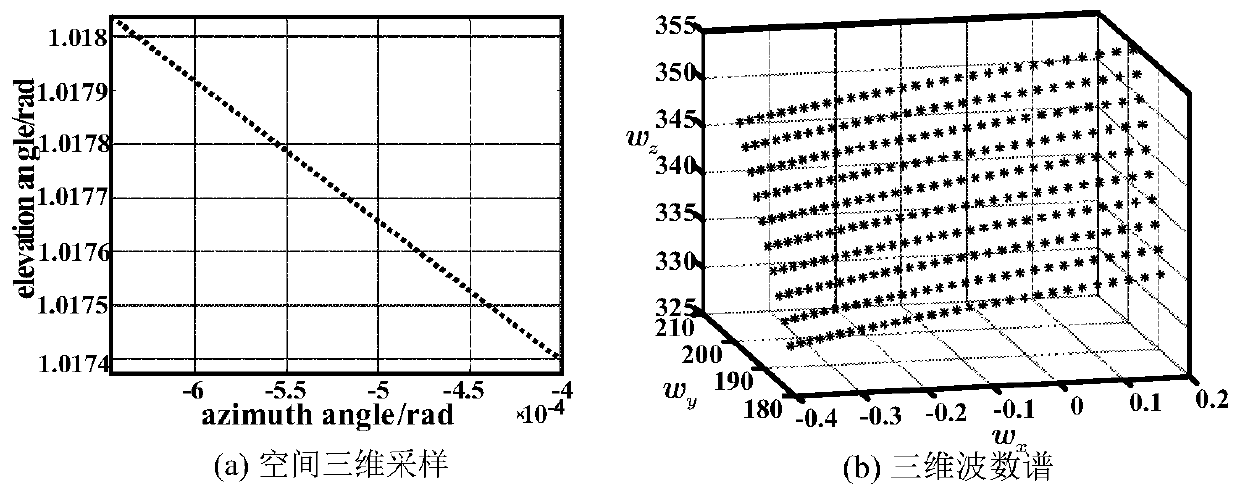Radar foresight three-dimensional imaging method based on descending segment curve trajectory
A curved trajectory, three-dimensional imaging technology, applied in the direction of radio wave reflection/re-radiation, radio wave measurement system, use of re-radiation, etc. Accurately hit the target performance and other issues to achieve the effect of reducing difficulty and saving energy
- Summary
- Abstract
- Description
- Claims
- Application Information
AI Technical Summary
Problems solved by technology
Method used
Image
Examples
Embodiment 1
[0022] Conventional synthetic aperture radar imaging technology is to obtain high-resolution microwave images of target distance and azimuth by transmitting large-bandwidth signals and relying on the movement of the carrier to form a virtual large aperture in space. At this time, the radar beam pointing and the flight direction of the radar carrier need to be A certain included angle is used to obtain the virtual array aperture required for high-resolution imaging in azimuth. The plan with included angle will consume more energy of the missile itself, which increases the difficulty of guidance and control. Someone proposed the method of using non-stationary convolution filtering to reconstruct the target image spectrum in the frequency domain, which solved the three-dimensional synthetic aperture imaging and multi-view processing of the forward-looking ground-penetrating radar, but the matching guidance method was used to attack the target, which greatly reduced the The abilit...
Embodiment 2
[0032] The radar forward-looking three-dimensional imaging method based on the descending segment curve track is the same as embodiment 1, and the echo signal mathematical model of setting up the SAR configuration described in step (1) includes the following steps:
[0033] 1.1 Based on the geometric vector method to represent the instantaneous slant distance history between SAR configuration projectiles and targets: see figure 2 , figure 2 is the spatial geometric configuration diagram of the missile-borne millimeter-wave forward-looking tangential SAR, which is the SAR configuration mentioned in the present invention, figure 2 Among them, the speed of the radar platform in the x-axis, y-axis and z-axis is V X (n), V Y (n) and V Z (n) indicates that the observation area is the shaded part in the figure, and the black dots represent target scattering points. The target moves on a tangential curved track in three-dimensional space, and its beam always illuminates the obse...
Embodiment 3
[0062] The radar forward-looking three-dimensional imaging method based on the descending segment curve track is the same as embodiment 1-2, and the vectorized decomposition of the echo signal described in step (2) includes the following steps:
[0063] 2.1 Divide the observation scene: Assuming that the launch signal is a linear frequency modulation signal, according to the curved trajectory of the missile's descending section, the three-dimensional space scene of the radar forward-looking tangential target imaging is evenly divided, and the observation scene is divided into three-dimensional uniform space in combination with the spatial sparse distribution characteristics of the target scattering points. distributed grid If the target is accurately calibrated on the preset grid point, the echo signal of the input SAR configuration is expressed as:
[0064]
[0065] where i and j represent fast time and slow time sampling points respectively, δ mnl is the target amplitud...
PUM
 Login to View More
Login to View More Abstract
Description
Claims
Application Information
 Login to View More
Login to View More - R&D
- Intellectual Property
- Life Sciences
- Materials
- Tech Scout
- Unparalleled Data Quality
- Higher Quality Content
- 60% Fewer Hallucinations
Browse by: Latest US Patents, China's latest patents, Technical Efficacy Thesaurus, Application Domain, Technology Topic, Popular Technical Reports.
© 2025 PatSnap. All rights reserved.Legal|Privacy policy|Modern Slavery Act Transparency Statement|Sitemap|About US| Contact US: help@patsnap.com



